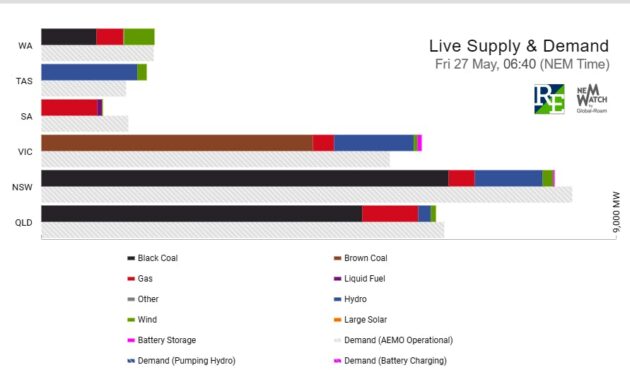Do you ever feel like fashion designer Jacobim Mugatu, in Zoolander? No, not the evil corporate conspiracy stuff, but wanting to scream your frustration that everyone is professing to believe something completely contrary to common sense.
“Doesn’t anybody notice this? I feel like I’m taking crazy pills!”

For Mugatu, it was the fact that nobody else wanted to notice that Derek Zoolander’s runway “looks” are nothing more than him pulling the same face over and over again. For me — and I suspect, a great many BFD readers — it’s the Climate Cult’s lunatic denial of the obvious facts about energy policy.
The more a grid is given over to “renewables”, the more expensive and often categorically unstable the grid becomes. This obvious fact has been demonstrated everywhere from South Australia to Germany.
Yet the Climate Cult insist that the only answer is more renewables and, in plain defiance of the brute facts of electricity prices, that renewables are “cheaper”.
Are we taking crazy pills — or them?
The combination of wind droughts and the lack of feasible grid-scale battery storage makes the green energy transition impossible for the time being, despite what we are told.
Several times a year, there are periods with next to no wind across the whole of south-eastern Australia (the National Energy Market).
These ‘wind droughts’ can be described as icebergs in the path of the RE Titanic.
Without wind, all those ghastly wind farms that apparently warm the cockles of the Climate Cult are worse than useless. It wasn’t so bad when we had reliable coal and gas plants to back them up, but the Cult have seen to it that the coal plants are either dismantled or allowed to deteriorate to breaking point.
We have reached a critical tipping point.
If we lose more fossil fuel capacity from the grid, Australia’s power supply will fail every time there is not enough wind or solar power available to meet the peak demands at breakfast and dinnertime. The records show quite clearly that these renewable energy droughts happen often and there will not be enough power.
South Australia has already experienced a state-wide, complete blackout. Melbourne and Sydney have repeated teetered on the edge of widespread blackouts. Yet, the Cult keep playing their Kerplunk game of pulling more and more coal straws out — it’s only going to take one or two more before all the renewable marbles come crashing down.
Building more capacity does not help any more than having a big petrol tank in a car helps when it is empty. You can’t capture what isn’t there.
This would appear to be stating the obvious, but it seems to have been neglected in planning the electricity system that we have today.
Because, from the nutters gluing themselves to roads, to the nutters taking over government-run regulators, the Cult are gobbling down the crazy pills like so many green Smarties.
Independent analysis has found that, on average, generation only amounts to just 29% of installed wind capacity. But the average is not what counts: what counts is output at its lowest point. When a wind drought hits — as they so often do — then output is zero of installed capacity.
Building more wind farms is pointless. 0% of five million turbines is exactly the same as 0% of 50: it’s zero electricity, all the way down.
Three strategies are proposed to fix the problem:
• More transmission lines
• Batteries
• Pumped hydro storage
Like building more wind turbines, more transmission lines will be completely useless when the entire grid is gripped by a wind drought. “Big batteries” are piddling when compared with the amount of power consumed by even a large-ish city. Pumped hydro not only comes with massive financial and environmental cost, even the biggest, like Snowy 2.0, isn’t even equal to a single coal station.
The failure of supply during wind droughts is not a bug in the renewable energy system, it is a feature.
Spectator Australia

As the above graph shows, when a wind drought hits, it can hit the entire continent. Even if a wind drought like this was rare (and they’re more frequent than you’d think — in June 2020, for example, wind generation plummeted to near-zero five-six times), just one is enough to cause a catastrophic failure across the entire national grid.
You wouldn’t climb a ladder that had even one faulty rung, nor would you fly in a plane that worked “most” of the time.
A national electricity grid shouldn’t be run on such a gamble, either.

